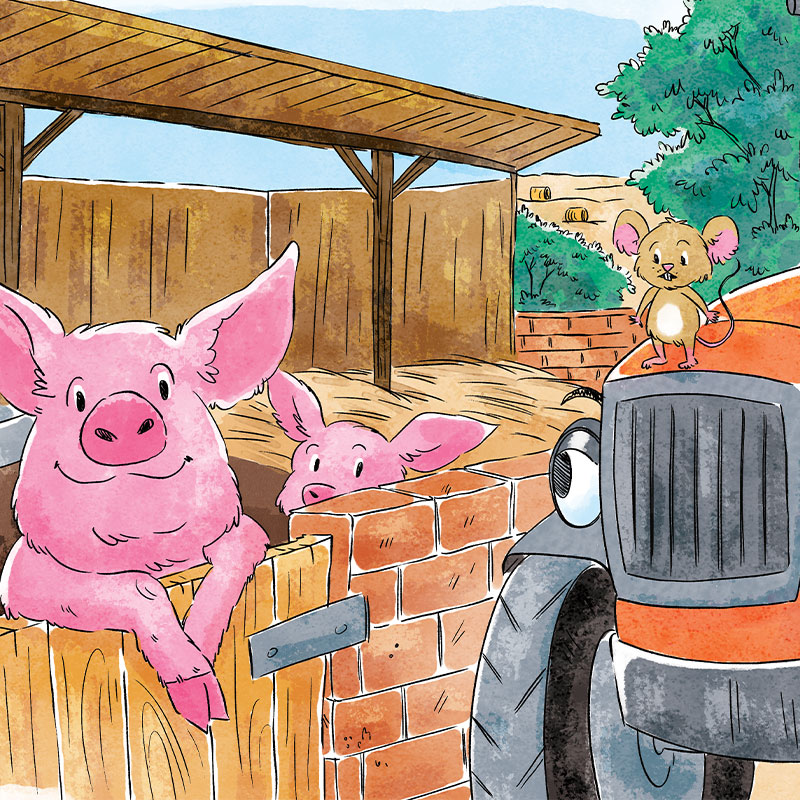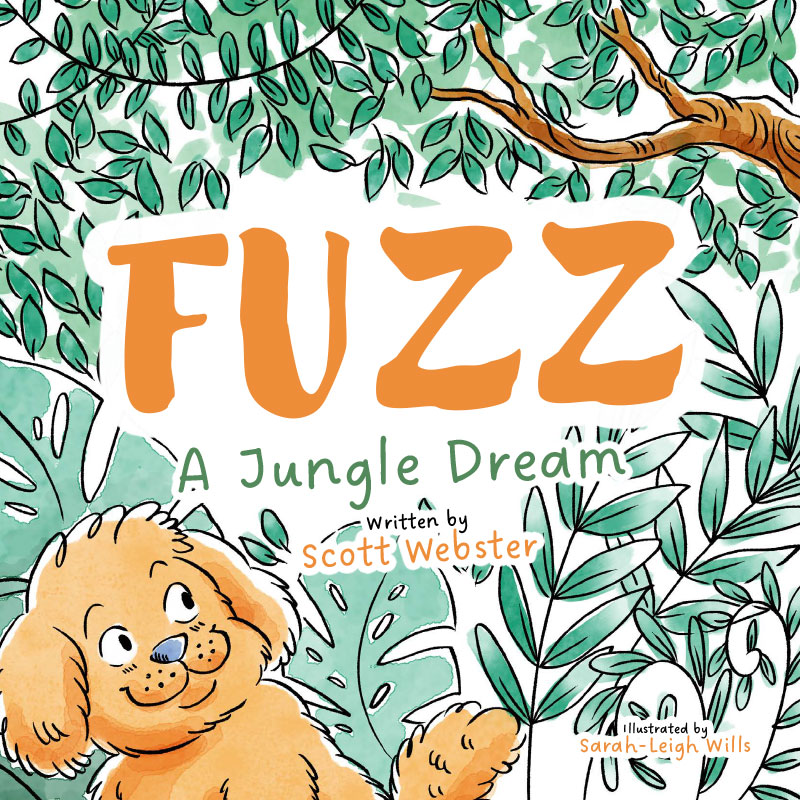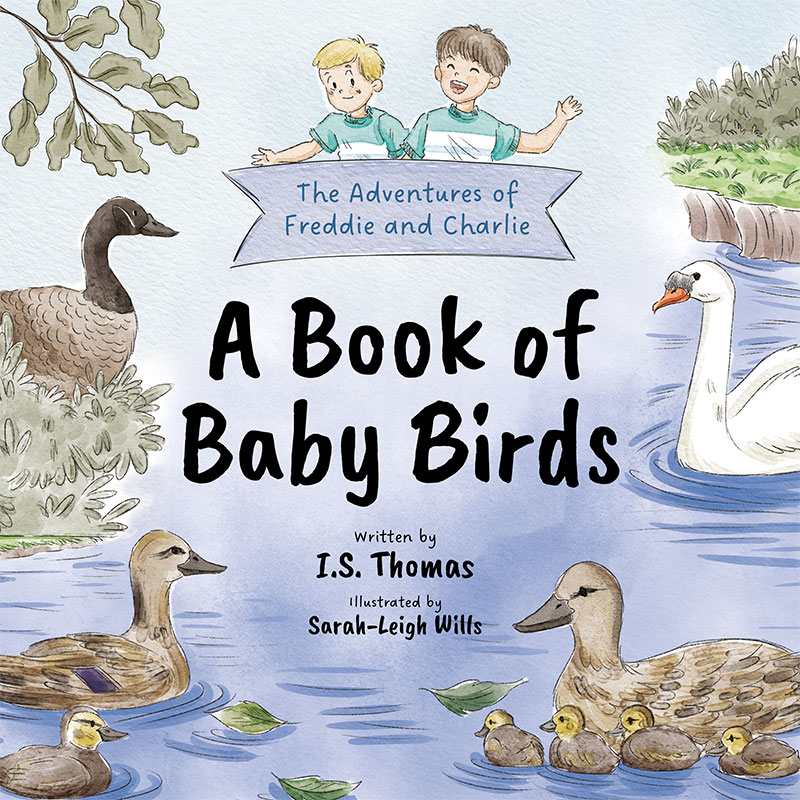Picture books are the magical doorways that introduce young children to the wondrous world of storytelling. These beautifully crafted books, filled with captivating illustrations and simple yet engaging narratives, have the power to enchant, educate, and inspire young minds. At Happydesigner, we have had the privilege of being a part of this enchanting world, creating illustrations that bring picture book stories to life.
As an illustration studio specialising in children’s book illustrations, we understand the crucial role that picture books play in a child’s early development. They are not merely entertaining stories; they are tools for fostering a love of reading, nurturing imagination, and teaching valuable life lessons. Picture books provide children with their first glimpse into the vast realm of literature, setting the foundation for a lifelong journey of learning and discovery.
In this article, we will delve into the captivating world of children’s picture books, exploring their importance, the key elements that make them successful, and how Happydesigner approaches the art of picture book illustration. Join us as we uncover the magic and wonder that lie within the pages of these enchanting tales.
The Importance of Children’s Picture Books
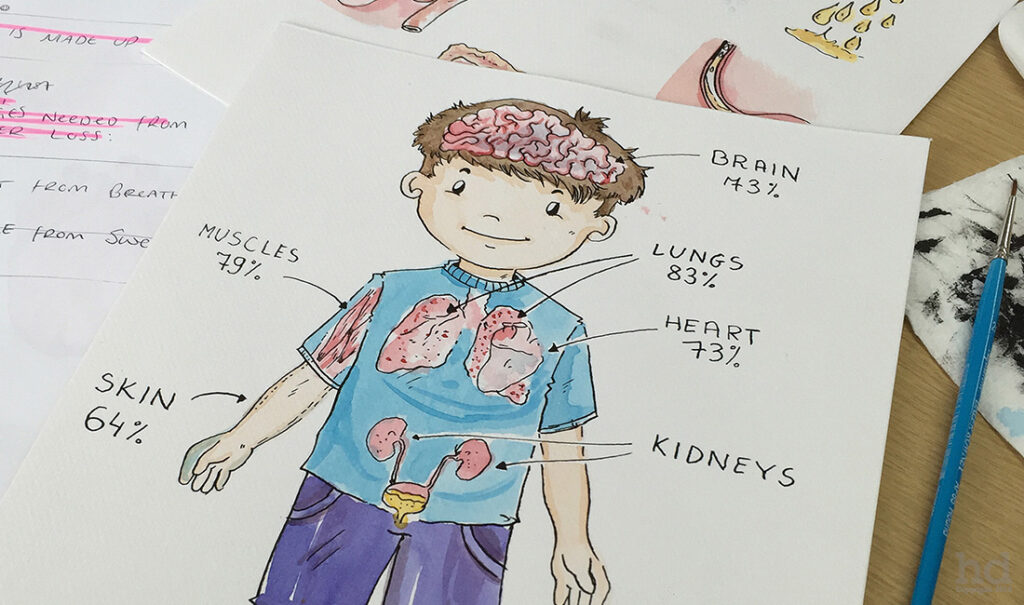
Early Literacy Development
Picture books play a vital role in promoting early literacy skills in young children. Through a combination of simple text and rich illustrations, picture books introduce children to the basic concepts of reading, such as story structure, language patterns, and vocabulary. The repetition of words, rhymes, and phrases in picture books helps children develop phonemic awareness, a crucial foundation for future reading success.
At Happydesigner, we understand the importance of creating illustrations that support and enhance the text, making it easier for children to comprehend the story and engage with the language. Our amazing illustrator, Sarah, carefully considers the interplay between words and images, ensuring that the illustrations provide visual cues and context to support young readers.
Stimulating Imagination and Creativity
One of the most enchanting aspects of picture books is their ability to stimulate a child’s imagination and creativity. The vivid illustrations and whimsical stories transport children to new worlds, introducing them to a variety of characters, settings, and experiences. Picture books encourage children to think beyond the literal, to explore the depths of their own imagination, and to create their own stories inspired by the images they see.
At Happydesigner, we strive to create illustrations that are not only visually stunning but also rich in detail and open to interpretation. Sarah fills each page with intricate elements and hidden surprises, encouraging children to spend time exploring the illustrations and letting their imaginations run wild. By providing visual prompts and leaving room for personal interpretation, we aim to foster a child’s natural creativity and love for storytelling.
Emotional and Social Development
Picture books are powerful tools for supporting a child’s emotional and social development. Through the characters and situations portrayed in these books, children learn about emotions, relationships, and social norms. Picture books can help children navigate complex feelings, such as fear, anger, or sadness, by providing a safe space to explore and process these emotions.
Moreover, picture books often feature diverse characters and cultures, exposing children to different perspectives and promoting empathy and understanding. By seeing themselves and others represented in the pages of a book, children develop a sense of self-identity and learn to appreciate and respect the diversity of the world around them.
At Happydesigner, we are committed to creating illustrations that are inclusive, respectful, and emotionally resonant. Sarah takes great care in depicting characters with sensitivity and authenticity, ensuring that children can see themselves and others reflected in the stories they read.
Elements of a Successful Picture Book

Engaging Story and Narrative
At the heart of every successful picture book lies a captivating story that engages and delights young readers. The best picture books feature simple yet meaningful narratives that are carefully crafted to hold a child’s attention and convey a clear message or theme. These stories often have a clear beginning, middle, and end, with a satisfying resolution that leaves children feeling content and inspired.
When working on a picture book project, Sarah collaborates closely with the author to ensure that the illustrations complement and enhance the narrative. She carefully considers the pacing of the story, using the illustrations to guide the reader through the plot and create a sense of momentum. By paying attention to the rhythm and flow of the story, Sarah creates a visual narrative that works in harmony with the text, making the story come alive in the minds of young readers.
Memorable Characters and Settings
Another key element of a successful picture book is the presence of memorable characters and settings. Children are drawn to characters they can relate to, whether it’s a brave little mouse, a mischievous rabbit, or a kind-hearted elephant. These characters become the child’s friends, guiding them through the story and teaching them valuable lessons along the way.
Similarly, the settings in picture books play a crucial role in creating a sense of place and atmosphere. Whether it’s a magical forest, a bustling city, or a bedroom, the setting provides the backdrop for the story and helps children immerse themselves in the narrative.
At Happydesigner, Sarah puts great care into designing characters and settings that are both visually appealing and emotionally resonant. She considers each character’s unique personality, quirks, and visual appearance, ensuring that they are distinct and memorable. When creating settings, Sarah draws upon her imagination and research to craft environments that are rich in detail and atmosphere, transporting children to new and exciting worlds.
Rhythm and Readability
Picture books are often designed to be read aloud, making rhythm and readability essential elements of their success. The best picture books feature text that flows smoothly, with a pleasing cadence and natural language patterns. The words should be easy to read and understand, allowing children to follow along and engage with the story.
The interplay between text and illustrations is also crucial in creating a rhythmic and enjoyable reading experience. The illustrations should complement the text, providing visual breaks and pacing cues that guide the reader through the story. Well-placed page turns can create a sense of anticipation and surprise, keeping children engaged and eager to see what happens next.
At Happydesigner, we understand the importance of creating illustrations that support the rhythm and readability of the text. Sarah works closely with the book designer to ensure that the illustrations are placed strategically, enhancing the flow of the story and providing visual interest that keeps children engaged. By carefully considering the balance between text and images, we create picture books that are a joy to read aloud and share with young children.
Visual Storytelling and Artistic Style
In picture books, the illustrations are just as important as the text in telling the story. The best picture books feature illustrations that are not only beautiful and eye-catching but also meaningful and purposeful. Each image should contribute to the narrative, providing visual cues, foreshadowing, and symbolism that deepen the reader’s understanding and appreciation of the story.
The artistic style of the illustrations also plays a significant role in the success of a picture book. From soft watercolours to bold digital art, the style should be well-suited to the tone and theme of the story, creating a cohesive and immersive visual experience. A distinctive and memorable artistic style can also help a picture book stand out in a crowded market, attracting the attention of both children and adults.
At Happydesigner, Sarah is known for her charming illustration style, which combines traditional and digital techniques to create images that are both timeless and fresh. She carefully considers the mood and atmosphere of each story, adapting her style to suit the specific needs of the project. Whether it’s a dreamy, ethereal tale or a lively, humorous adventure, Sarah’s illustrations bring the story to life with warmth, creativity, and a touch of magic.
The Happydesigner Approach to Picture Book Illustration
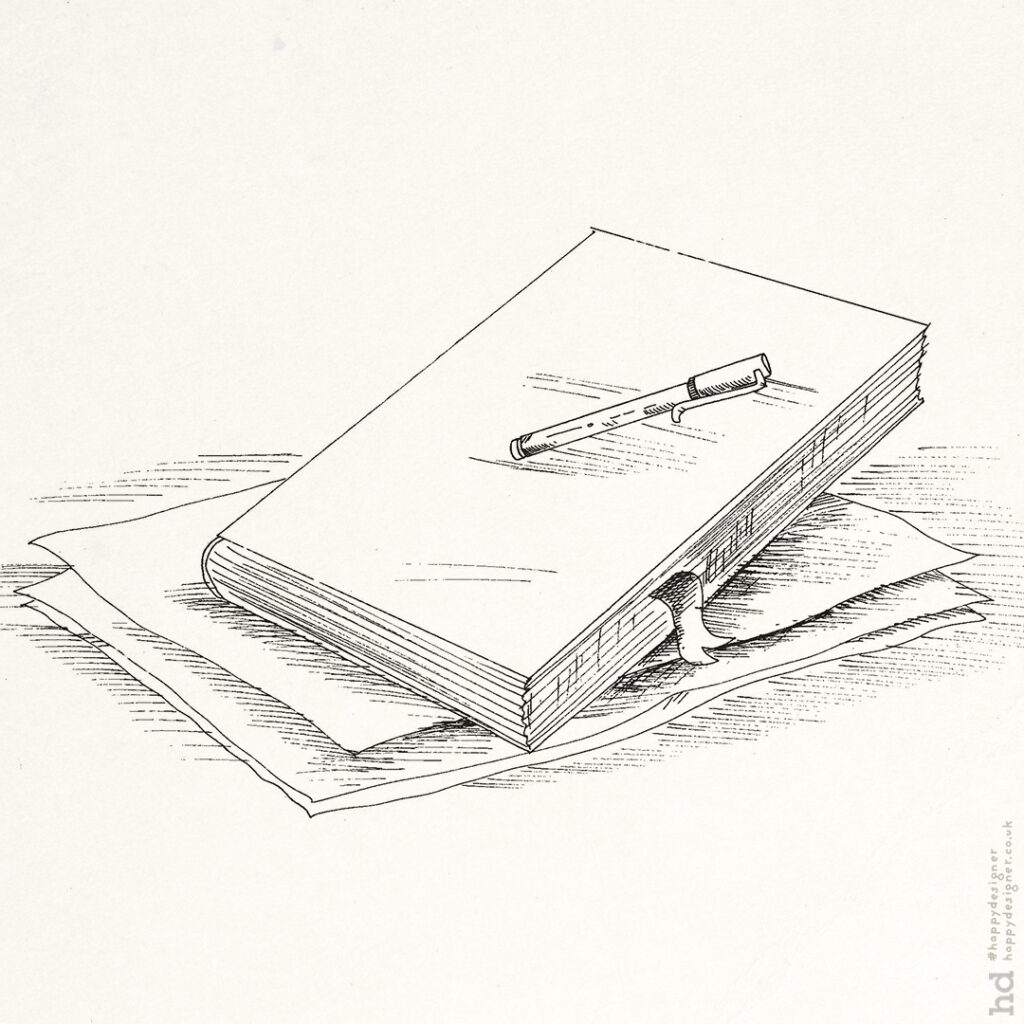
Understanding the Author’s Vision
At Happydesigner, we believe that successful picture book illustration starts with a deep understanding of the author’s vision. Before putting pencil to paper, Sarah takes the time to thoroughly read and absorb the story, immersing herself in the characters, settings, and themes. She then engages in a collaborative dialogue with the author, asking questions, sharing ideas, and gaining a clear sense of the story’s intended tone, message, and audience.
This understanding of the author’s vision forms the foundation of Sarah’s illustration process. By aligning her creative approach with the author’s intentions, she ensures that the illustrations enhance and elevate the story, rather than competing with or overwhelming the text. This collaborative partnership between author and illustrator is essential to creating a picture book that is both visually stunning and narratively cohesive.
Research and Visual Development
Once Sarah has a solid grasp of the author’s vision, she begins the process of research and visual development. This stage involves gathering visual references and experimenting with character designs and composition. Sarah draws inspiration from a wide range of sources, including nature, art history, and her own imagination, to create a unique and captivating visual world for the story.
Throughout the visual development process, Sarah creates numerous sketches, concept art, and colour studies, refining and evolving her ideas until she arrives at a cohesive and compelling visual direction. She pays close attention to the details that will bring the story to life, such as the expressions on characters’ faces, the textures of their clothing, and the atmospheric lighting of each scene. By investing time and care into the visual development stage, Sarah lays the groundwork for illustrations that are rich, immersive, and emotionally resonant.
Iterative Refinement and Collaboration
The illustration process at Happydesigner is highly iterative and collaborative, involving multiple rounds of sketches, feedback, and refinement. Sarah works closely with the author throughout the project, sharing her progress and incorporating their input and suggestions. This collaborative approach ensures that the illustrations are not only visually stunning but also aligned with the vision and goals of the entire creative team.
As Sarah moves from rough sketches to final illustrations, she continues to refine and polish each image, paying meticulous attention to composition, colour, and detail. She uses a combination of traditional and digital media to create illustrations that are both technically precise and emotionally expressive, bringing the characters and settings to life with depth, texture, and personality.
Delivering High-Quality, Print-Ready Artwork
The final stage of the illustration process at Happydesigner involves preparing the artwork for print production. Sarah ensures that each illustration meets the highest standards of quality and technical specifications to optimise the images for the chosen printing process and paper stock.
In addition to delivering the final illustrations, Sarah also provides detailed artwork guidelines and files, ensuring that the illustrations are reproduced accurately and consistently across all printed copies of the book. By taking a meticulous and professional approach to the production process, Happydesigner guarantees that the final picture book is a beautiful and enduring work of art that will be treasured by children and families for years to come.
Conclusion: The World of Children’s Picture Books

Children’s picture books are a gateway to a world of wonder, imagination, and endless possibilities. At Happydesigner, we are passionate about creating illustrations that bring these enchanting tales to life, captivating young readers and nurturing their love of storytelling. Through our collaborative approach, meticulous attention to detail, and unwavering commitment to quality, we strive to create picture books that are both visually stunning and emotionally resonant.
Our illustrator, Sarah, pours her heart and soul into every project, bringing a wealth of creativity, technical skill, and storytelling expertise to the table. She understands the power of picture books to shape young minds and hearts, and she approaches each illustration with a deep sense of responsibility and care. From the initial spark of an idea to the final, printed page, Sarah works tirelessly to create illustrations that are both beautiful and meaningful, enhancing the story and engaging young readers on a profound level.
At Happydesigner, we believe that picture books have the power to make a lasting impact on a child’s life, fostering a love of reading, creativity, and learning that will stay with them forever. We are honoured to be a part of this enchanting world, collaborating with authors and publishers to create picture books that will be cherished by generations of children. If you are looking to bring your picture book story to life, we invite you to embark on this magical journey with us, and together, we will create something truly extraordinary.

Discover the magic of storytelling with Happydesigner – where every illustration opens a world of imagination for your child.
Further Reading
How Picture Books Help Kids Develop Literacy Skills – Reading Partners discusses the benefits of picture books in early literacy development, highlighting their role in building language skills, understanding, fluency, and foundational literacy skills. Read More
Seeing is Believing: The Benefits of Picture Books for Building Reading Skills – EBSCOpost examines how illustrations in picture books support children’s understanding of text, promoting literacy, vocabulary skills, sentence structure, and story analysis. Read More

